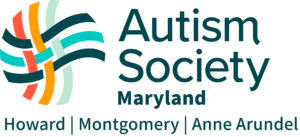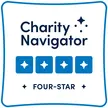The 5th Edition of the Diagnostic and Statistical Manual of Mental Disorders (DSM) will be published in May 2013 by the American Psychiatric Association (APA). There has been considerable concern from the autism community about the changes in the diagnosis of autism and related disorders, and the implications of those proposed changes. This article presents a very brief overview of the fundamental changes.In the DSM-IV, patients could be diagnosed with four separate disorders: autistic disorder, Asperger’s disorder, childhood disintegrative disorder, or the catch-all diagnosis of pervasive developmental disorder not otherwise specified. The new DSM-5 diagnosis collapses these previously distinct autism subtypes into one unifying diagnosis of autism spectrum disorder (ASD). Childhood disintegrative disorder has been eliminated altogether.
According to the APA, “Autism spectrum disorder is a new DSM-5 name that reflects a scientific consensus that four previously separate disorders are actually a single condition with different levels of symptom severity in two core domains.” The revised diagnosis is meant to represent a more accurate and medically and scientifically useful way of diagnosing individuals with autism-related disorders.
New symptom domains. The current three symptom domains of social impairment, language challenges, and restricted repetitive behaviors will become two—social communication impairment and restricted repetitive behaviors, interests, and activities (RRBs). If no RRBs are present, the new “social communication disorder” is diagnosed.
Four diagnostic criteria. The diagnosis of autism spectrum disorder will be specified by four criteria: (1) persistent deficits in social communication and social interaction; (2) restricted interests/ repetitive patterns of behaviors, interests, or activities; (3) presence of symptoms in early childhood; and (4) impairment in everyday functioning.
Levels of severity. An important change to the DSM-5 is the incorporation of measures of severity for autism spectrum disorder. Autism spectrum disorder will be divided into three levels of severity to indicate the level of supportive services required by an individual. Severity Level 1 requires support; Level 2 requires substantial support; and Level 3 requires very substantial support. Notably, a number of specifiers also have been added, among them age of onset; type of onset (noting whether skills were lost); and whether additional conditions exist (e.g. intellectual disabilities, anxiety, seizures, etc.).
What about PDD-NOS? PDD-NOS will be changed to the new diagnosis of “social communication disorder.” The focus of social communication disorder is on the impairment of language pragmatics. It will be diagnosed primarily on the difficulty in the social uses of communication in a natural context, and low social communication abilities resulting in functional limitations. It will require that ASD be ruled out, and that symptoms be present in early childhood.
What impact will the changes have? The most widely asked question is whether there will be a change in prevalence rates of autism. According to Dr. Susan E. Swedo, chair of the DSM-5 Neurodevelopmental Disorders Work Group, “We expect that it will not change much. The criteria being used in DSM-5 are basically the same as those of DSM-4. They have been modified to be much more descriptive of individual patients and to more accurately reflect the range of symptom severity.”
As for the question of what happens to those currently diagnosed with Asperger’s syndrome, according to the APA, “anyone diagnosed with one of the four pervasive developmental disorders from DSM-IV should still meet the criteria for ASD in DSM-5 or another, more accurate DSM-5 diagnosis. . . . Most people will retain their diagnosis of ASD using the new criteria.”
More information can be found on the APA website.



























